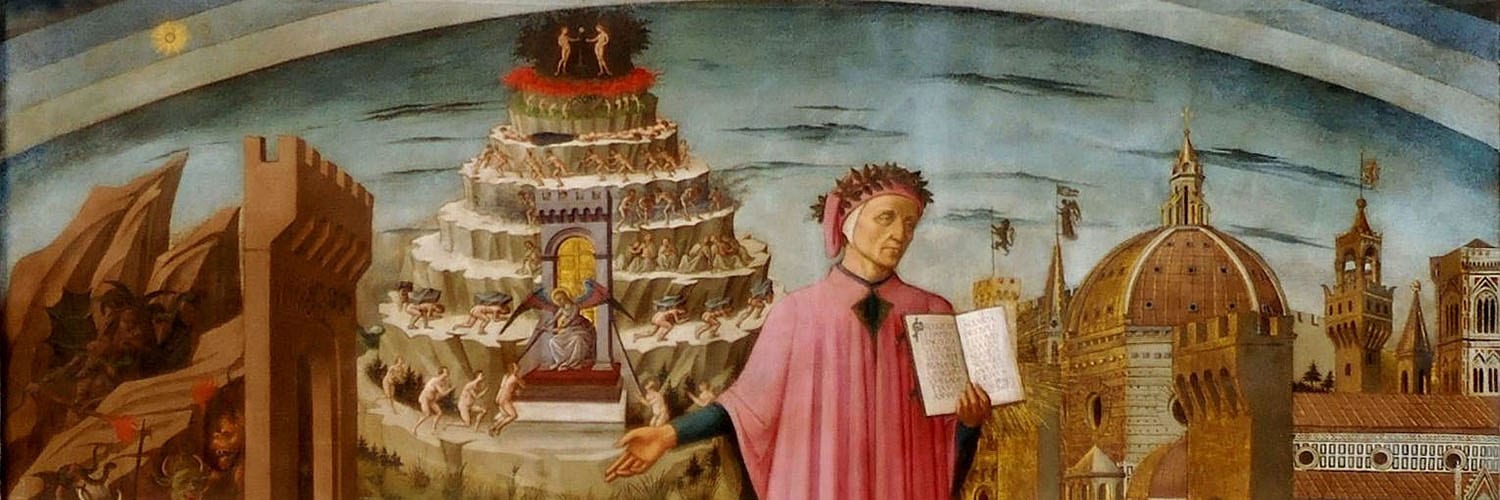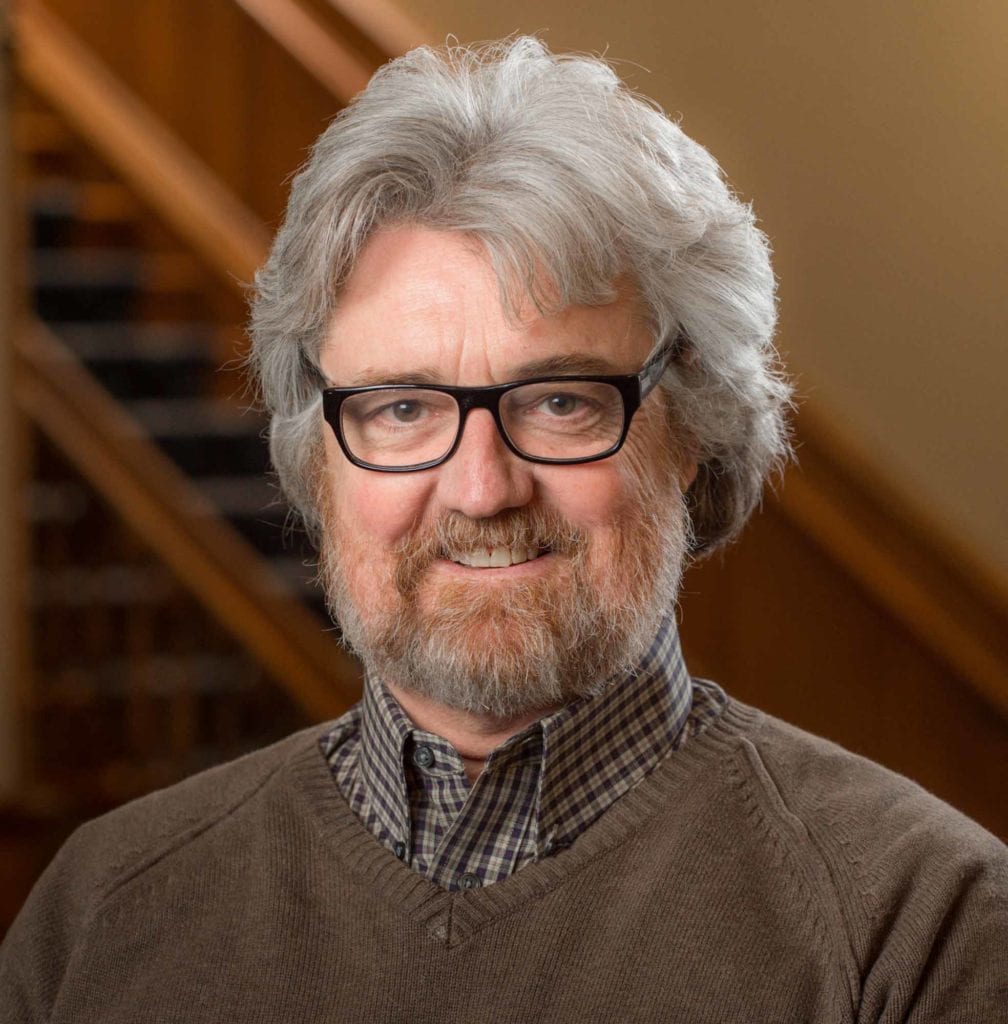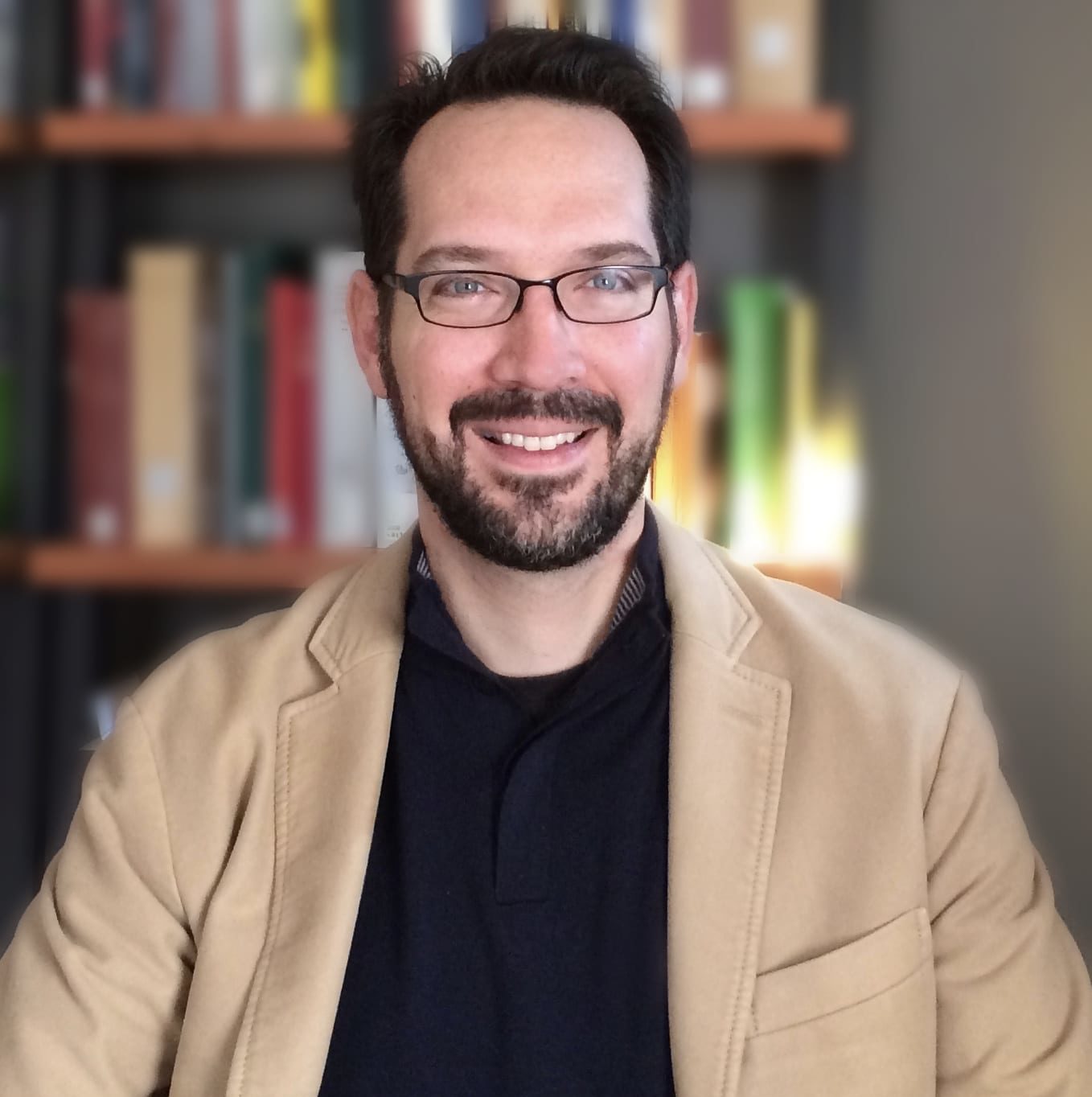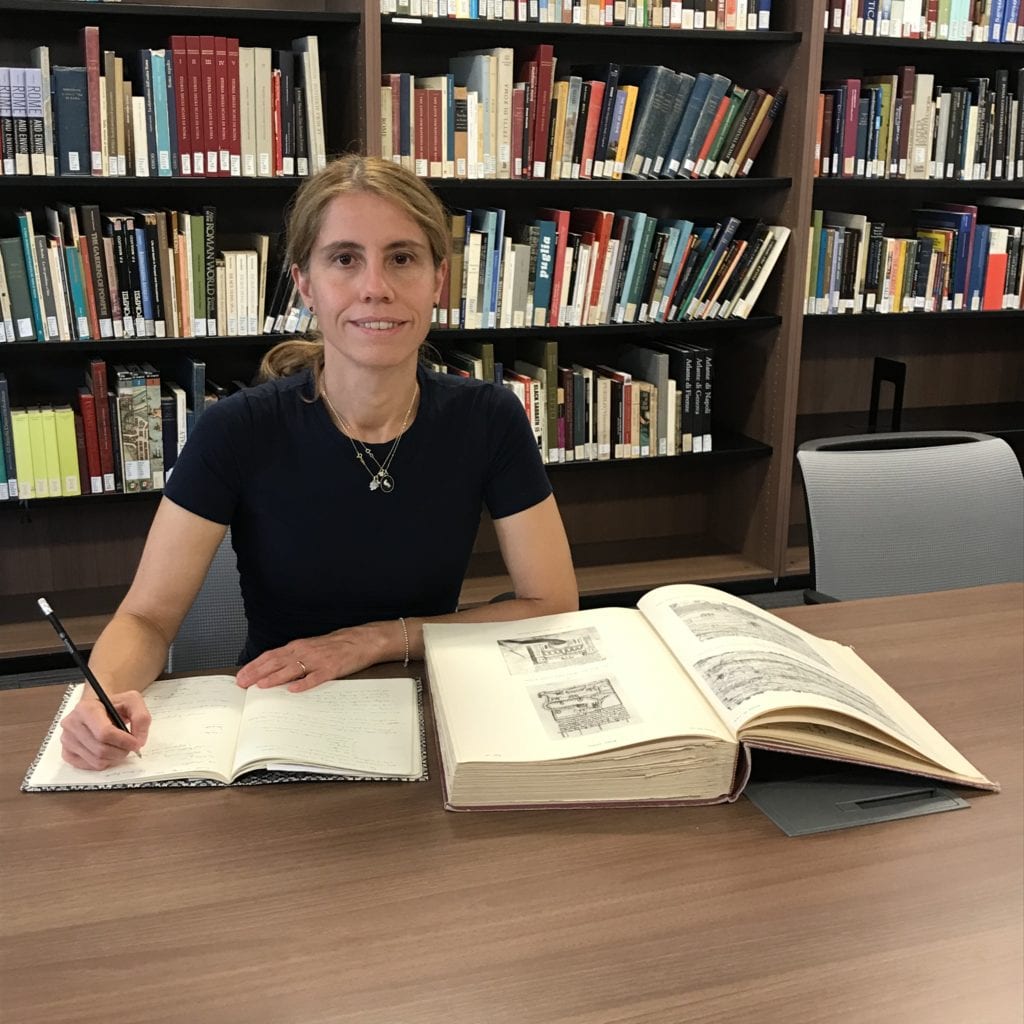Intro: From the dark wood to Rome

When Dante is lost in the dark wood of sin, the soul of the Roman poet Virgil is sent from Heaven to rescue him and guide him on his way to salvation through Hell and Purgatory. Dante’s journey is immediately compared to Aeneas’s voyage to Italy where his offspring will found the city of Rome, the subject of Virgil’s epic poem Aeneid. In preparation for the meeting, some resources are dedicated to introductory material, including ‘instructions for use’.
Meet the Faculty
Presented by Theodore J. Cachey Jr.

Theodore J. Cachey is a Professor of Italian and the Albert J. and Helen M. Ravarino Family Director of Dante and Italian Studies at the University of Notre Dame and Co-Director of the Center for Italian Studies. He specializes in Italian Medieval and Renaissance literature, in particular Dante, Petrarch and Boccaccio, the history of the Italian language, and the literature and history of travel.

David Lummus is Co-director of the Center for Italian Studies and Visiting Assistant Professor of Italian.

Chiara Sbordoni is Adjunct Professor of Italian at the Notre Dame Rome Global Gateway.
Pre-Readings
Presented by Theodore J. Cachey Jr.
Read Inferno 1-2
Reading Questions meeting 1: Inferno 1-2.
1. How many different ways can one interpret the first 12 lines of the poem, beginning with the first verse “In the middle of the journey of our life”? What do you notice about the rhyme scheme of the original Italian?
2. Identify aspects of cantos 1 and 2 that support the idea that these cantos introduce the entire poem.
3. Why is Virgil the guide rather than Aristotle?
4. How is the pilgrim’s attitude toward Virgil different from the poet’s attitude as dramatized in the first canto?
5. What is the purpose or function of the second canto?
Dante’s Inferno: Instructions for Use
Presented by Theodore J. Cachey Jr.
This video is an introduction to the reading of Inferno I and II and the distinction between Dante the pilgrim and Dante the author.
From the dark wood to Rome: Introduction to Inferno 1 and 2
Presented by Theodore J. Cachey Jr.
The “Divine Comedy” (or “Comedìa” as the title is referred within the text itself), is the first epic poem written in an Italian vernacular between 1307 and 1321. The author was the exile Florentine poet Dante Alighieri (1265-1321), and his poem is at the foundation of the Italian literary tradition and of the Italian language. In 100 cantos and 14.223 terza rima hendecasyllable verses, Dante features himself as pilgrim on his way from the dark wood of sin to Heaven and salvation, in a providential and moral journey through the three realms of Christian eschatology, Hell, Purgatory, and Paradise, set in the holy week of the year 1300 and presented as true. The three realms have a textual correspondence in the three canticles in which the poem is divided: Inferno (Hell) divided in 34 cantos, Purgatorio and Paradiso each divided in 33 cantos.
Midway in the journey of our life
I came to myself in a dark wood,
for the straight way was lost.
The first of 100 cantos, Inferno 1 functions as a proem to the whole poem and it begins in medias res (in the midst of things) with Dante- the pilgrim in a dark wood- having lost the straight path halfway through ‘our’ life. Besides and before being identified with his own historical persona, the main character of the Commedia is Everyman, his condition is that of any Christian who might find themselves lost in sin. The following verses immediately reveal another Dante: the poet who is writing the poem and for whom remembering the experience and putting it in words is hard and bitter. Dante-pilgrim sees a hill illuminated by the sun that with its light and as a powerful symbol for God in Medieval literary tradition, ‘leads men straight.’ The pilgrim starts ascending the hill but three beasts, a leopard, a lion and a she-wolf, who probably symbolize three of the most vicious sins, lust, pride, and avarice, push him back downhill. The spirit of the Latin poet Virgil suddenly appears to the pilgrim. He introduces himself as the author of the “Aeneid,” the poem that celebrates the Trojan hero Aeneas who visited the afterlife and from whose lineage the founder of Rome had descended. Virgil offers himself as a guide to Dante explaining how, in order to be saved from the dark wood, Dante will have to go with him through Hell and Purgatory. If Dante then wants to go further, Virgil will leave him in the care of a woman who will lead him through the last part of the journey.
The second canto opens at dusk with Dante- the pilgrim about to set out on his journey and Dante the poet invoking the Muses and his own imagination and memory while starting writing about it. Dante-pilgrim has doubts: He is not Aeneas destined to found Rome, the Holy Sea of Peter; he is not St Paul who ascended to the third Heaven and whose mission was the conversion of the gentiles. Who authorizes him to start on this journey that seen from the point of view of a frail man sounds like madness? Virgil thus recounts to Dante how a woman, Beatrice, who in life had been Dante’s ideal love and for whom he had become a poet, had descended from Heaven and summoned Virgil so that he would rescue Dante from the beasts and sin. Beatrice had been sent by Lucy and Lucy by the Virgin Mary Herself. Reassured upon learning that his journey is authorized by the three blessed ladies, Dante enthusiastically accepts Virgil’s guidance and they enter ‘on the deep and savage way.’
Dante’s Inferno. Instructions for Use: the Contrappasso and the Map of Hell
Presented by Theodore J. Cachey Jr.
This video presents Dante’s map of Hell, and introduces us to the contrappasso, the relationship between sins and punishments.
On the road from the dark wood to Rome: Virgil
Presented by David Lummus
Dante the pilgrim is lost in the dark wood of sin. The Roman poet Virgil is providentially sent to the rescue. Virgil’s “Aeneid,” which recounts the foundation myth of Rome, was a powerful model for Dante.
Prepare for Next Week
Presented by Theodore J. Cachey Jr.
Read Inferno 5
Reading Questions meeting 2: Inferno 5.
1. What is the sin punished in the second circle of hell, and what is the punishment inflicted on the damned? What is the relation between the sin and the punishment, that is, the significance of the contrapasso?
2. Identify and discuss the group of sinners encountered in vv. 52-72. How does Dante characterize them as a class?
3. Identify and discuss the canto’s striking similes drawn from bird life? How do they express the significance of the episode?
4. Analyze the first part of Francesca’s speech (ll. 88-108). What are some of the key rhetorical figures and expressions that reveal Francesca’s personality? What are the sources for her statements for her love in line 100 or in line 103? How does her speech reveal something about why she finds herself in Hell? Where did Francesca go wrong?
5. Analyze Francesca’s answer to Dante’s request that she recount the how and when of her knowing ‘dubbiosi desiri’ in ll. 127-137? What is the story of Lancelot, Guinevere, and Galehaut that she and Paolo were reading? What is the relation between that story and the situation in which Francesca finds herself? How does Francesca’s story of reading together with Paolo that led to their sin and death illuminate the nature of their error?
6. What is Dante the pilgrim’s response to Francesca’s tale in ll. 109-120 and 141-142 and how do you account for it? What is the relationship between the reaction of Dante the poet and the reaction of Dante the pilgrim to Francesca?
View the Event
Presented by Theodore J. Cachey Jr.
Subscribe to the ThinkND podcast on Apple, Spotify, or Google.
Featured Speakers:
- Theodore J. Cachey, Professor of Italian and the Albert J. and Helen M. Ravarino Family Director of Dante and Italian Studies, University of Notre Dame; Co-Director, University of Notre Dame Center for Italian Studies
- David Lummus, Visiting Professor of Italian and Co-Director, University of Notre Dame Center for Italian Studies
- Chiara Sbordoni, Adjunct Professor of Italian, University of Notre Dame Rome Global Gateway
Additional Resources
Presented by Theodore J. Cachey Jr.
Short Videos: La Divina Commedia in HD (with English subtitles)
The most important Dante websites for further research:
a) Dante Online (website of Società Dantesca Italiana: all the works, best bibliography, links, manuscript images)
b) The Princeton Dante Project (all the works in Italian and English, (searchable), Hollander translation and commentary, images, reference, maps, links, audio of the Italian)
c) Digital Dante (all the works, images, maps, links, resources, including the on-line commentary by Teodolinda Barolini)
d) The World of Dante (text, images, maps, links)
e) Danteworlds (images, audio, commentary, guides)
f) Dante Today (gathers “Citings and Sightings” and bibliography of Dante in the arts and contemporary culture)
g) The Dante Society of America website (information on student essay prizes, publications, events, and the American Dante Bibliography, downloadable)
h) The Devers Family Program in Dante Studies at the University of Notre Dame (and the Center for Italian Studies)
Recommended texts and supplementary resources:
Dante Alighieri Inferno, translation by Robert and Jean Hollander, commentary and notes by Robert Hollander (New York: Doubleday, 2000); Understanding Dante, John Scott (Notre Dame: Notre Dame UP, 2004); The Cambridge Companion to Dante, ed. Rachel Jacoff (Cambridge UP, 2nd edition, 2007); Dante in Context, ed. Zygmunt G. Baranski and Lino Pertile (Cambridge: Cambridge University Press, 2015); The Cambridge Companion to Dante’s Commedia, ed. Zygmunt G. Baranski and Simon Gilson (Cambridge; New York: Cambridge University Press, 2019).
